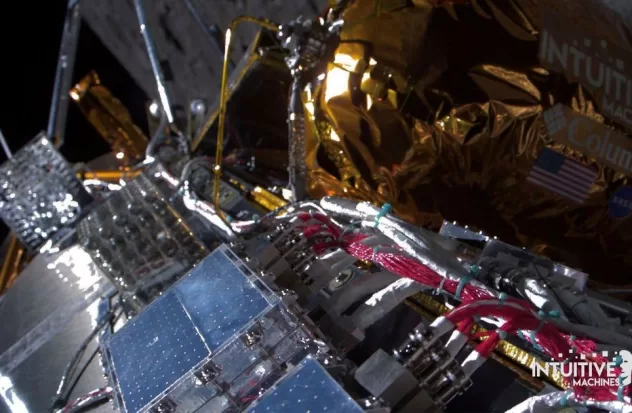The scheduled time of the moon landing has been brought forward from Houston, where the company’s control room is located.
A maneuver was carried out on Wednesday night to correct the probe’s altitude relative to the lunar surface, Intuitive Machines explained.
The Nova-C lunar landing module, which carries NASA scientific experiments, measures just over four meters high. It took off last week from the state of Florida (southeast) and entered lunar orbit on Wednesday.
The fully automated descent began before landing. The event could be followed live through the company and NASA websites.
The device is guided by cameras and lasers. At an altitude of 30 meters the final vertical descent will begin.
At that moment, a small machine equipped with cameras, developed by Embry-Riddle Aeronautical University, emerged from the lunar landing module and captured the big moment from the outside.
Nova-C had to slow down from 1,800 meters per second to one meter per second when its six feet hit the ground.
The success not only marks a major milestone for the private space sector, but also the first landing of a US probe on the Moon since the end of the legendary Apollo program in 1972.
India and Japan recently managed to land on the Moon thanks to their national space agencies, becoming the fourth and fifth countries to do so, after the Soviet Union, the United States and China.
But several companies (Israeli, Japanese and American) have tried in vain.
Russia also missed landing on the moon this summer.
lunar south pole
The location chosen by Intuitive Machines is located about 300 kilometers from the south pole of the Moon.
The crater that served as the landing strip is called Malapert A, in honor of a 17th century astronomer.
The lunar south pole is of special interest because it contains water in the form of ice, which could be exploited.
NASA hopes to send astronauts to the Moon starting in 2026 with its Artemis missions. To prepare them he wants to study the region more closely.
To achieve this, it uses its new NASA CLPS program, which has commissioned private companies to take its scientific material to the Moon, instead of developing vehicles to do so itself.
Intuitive Machines is one of these selected companies. Its contract with NASA for this first mission, called IM-1, amounts to 118 million dollars.
The goal is to reduce costs for the public agency, but continue to develop the space economy, despite the risks.
A first mission, led by the American company Astrobotic, failed last month.
Seven days active
The lunar lander carries six private cargoes (including sculptures by contemporary artist Jeff Koons depicting the phases of the Moon) and six NASA scientific instruments.
In addition, cameras located under the lunar lander will analyze the amount of dust thrown up during the descent, in order to compare it with the Apollo moon landings.
Another instrument will study the lunar plasma (a layer of electrically charged gas) and measure radio waves from the Sun and other planets.
The lunar landing module, named Odysseus, will work with solar panels and will be active for seven days from the moment it lands. Afterwards it will be inoperative.
Source: With information from AFP.




